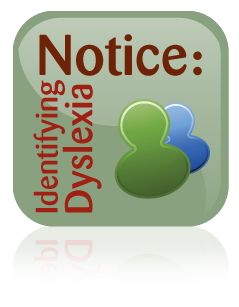| |
 
|
|

|
|
What to look for in the classroom
4D Schools encourages educators to move to a ‘notice and adjust’ teaching paradigm – noticing which students are having trouble and adjusting teaching methods accordingly.
For the majority of students with a dyslexic learning preference, simple adjustments in the classroom will be immensely valuable in inspiring them to draw on their strengths in the classroom. However some students - estimated at around 4% (compared with the conservatively estimated 10% of the population who are dyslexic) - may need additional specialist help, screening tests and small group, or one-on-one interventions, to help them make significant progress.
There are many different tests available for screening; and those recommended by international dyslexia expert Neil Mackay are CoPs, LASS and the Dyslexia Screening Test (DST). Detail on these is available in the downloadable 4D Schools Guide V2. More information on CoPS and LASS can also be found at www.lucid-research.com. More information on the DST is available at www.pearsonpsychcorp.com.au
|
One-to-one interventions may include phonetic programmes, reading recovery and SPELD programmes. These should be delivered by specialist teachers such as RTLBs/RTLits and SENCOs within schools. You can read more about phonics in the further resources section of this guide. For contact details for solution providers such as SPELD NZ or Kip McGrath, click here.
Parents should be informed as soon as you suspect a student has dyslexic-like tendencies. This is the most effective way to build trust and respect, and to create effective parent partnerships which support the child in the home and so optimise the good work you do in the classroom. An acid test of a school that is working is parental confidence, and this comes as a consequence of school action and quality communication.
DFNZ also offers support for parents through a dedicated 4D Family space. This site is designed to inform and assist parents whose child doesn’t seem to be making the same progress as others at school. It also includes personal stories from parents and information on solutions providers.
The 4D Schools Guide V2 contains detailed guidance on noticing dyslexia in the classroom, including an indepth matrix of things to look for, as well as a comprehensive list of general signs, usually apparent after a year at school. Some of these may include:
-
Challenges with visual and/or auditory sequential working memory
-
Struggling to make links with phonological awareness
-
Difficulties with making letter/sound links, spelling common words and segmenting and blending sounds
-
Issues with learning sequences eg. days of week
-
Fine motor coordination may be problematic, eg. tying laces, doing up buttons
-
Good oral capability but difficulties, including behavioural ones, when requested to complete written exercises
-
Letters or numbers reversed or confused b/d/p/q, n/u, 13/31
-
Problems with labels, rhymes, sequences
-
Enhanced creativity
-
Aptitude for constructional/technical toys
-
Being slower to process and needing repeated exposures to retain learning
-
Retrieval issues – learns something one moment, gone the next
-
Large gap between oral and written work
-
Poor sense of direction – difficulty telling left from right
-
Low self-esteem and unrealistic goals
-
Can appear on the ball, but is a bit of an enigma in terms of how their thought processes work
It is important to note that all lists must be viewed against a benchmark of ability appropriate achievement in other areas. This embodies the principle of “unexpected difficulties” due to dyslexic learning differences, rather than across-the-board learning difficulties due to “global delay”. Students with global delay tend to learn most things at a slower rate and require more repetition whereas students with dyslexia usually have difficulties in specific areas.
©Copyright Dyslexia Foundation of New Zealand. All rights reserved.
Content may be reproduced with permission of DFNZ, contact info@dfnz.org.nz |
|
|